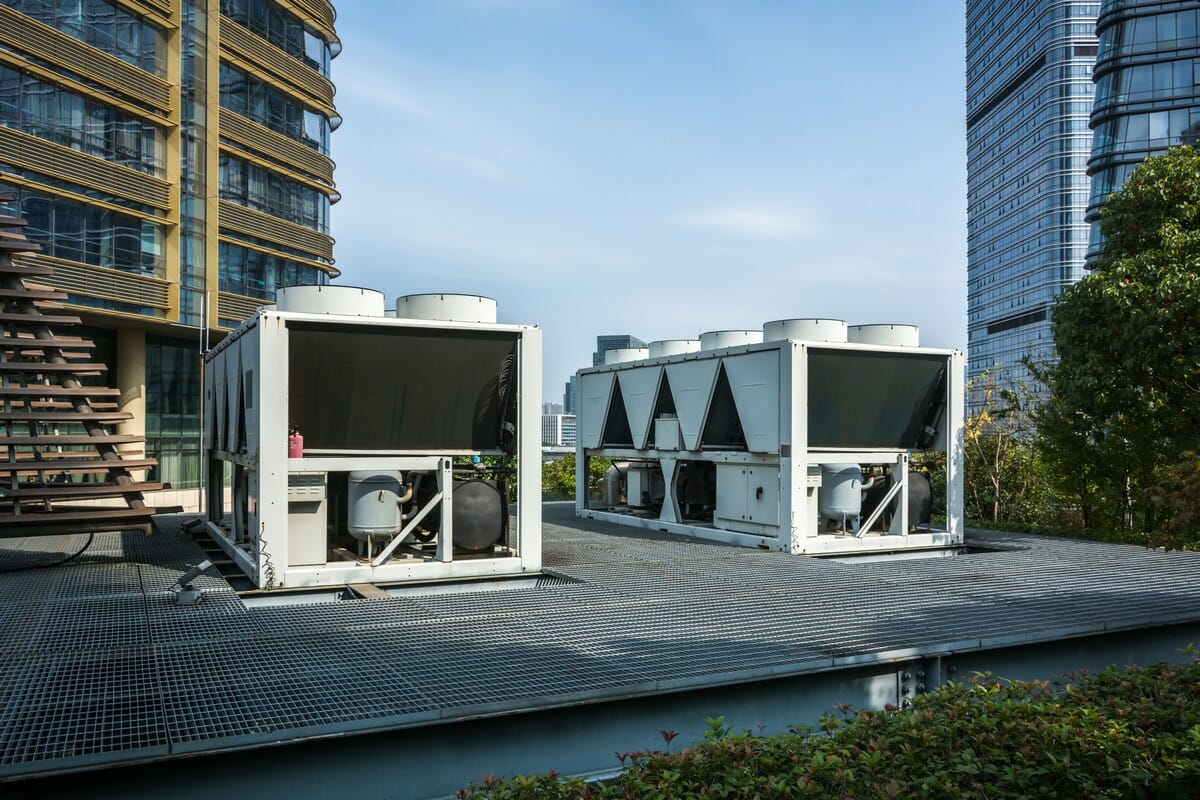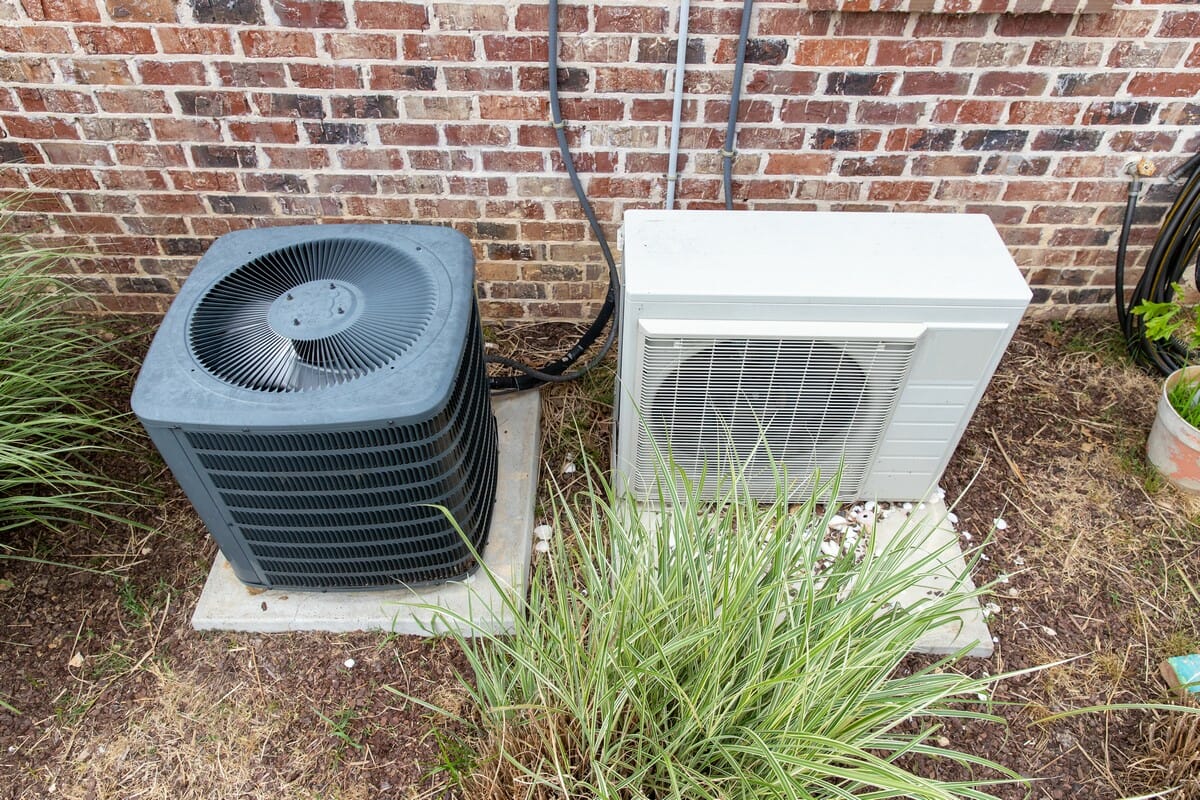Ducted vs. Ductless Heat Pumps and Air Conditioners
Table of Contents
- 1 - Ducted vs. Ductless Heat Pumps and Air Conditioners: How to Choose
- 2 - Mini-split vs Ducted Heat Pumps – What’s the Difference?
- 3 - When to Choose a Mini-Split Heat Pump
- 3.1 - Heat Pump Type
- 3.2 - When to Choose a DUCTED HEAT Pump
- 3.3 - Heat Pumps vs Air Conditioners
- 3.4 - Differences Between a Heat Pump and Air Conditioner
- 3.5 - Beneits of Heat Pumps
- 3.6 - What’s the Difference Between Ductless Air Conditioning and Ducted Air Conditioning?
- 3.7 - When to Choose Ducted Air Conditioning
- 3.8 - Enhanced Airflow is Needed
- 3.9 - Humidity is an Issue
- 3.10 - When to Choose Ductless Air Conditioning
Ducted vs. Ductless Heat Pumps and Air Conditioners: How to Choose
Now that you’ve decided to heat your property with air conditioning, what’s next?
These days, when you make a decision to install a new heat pump or air conditioning system for a house, you have a plethora of choices … Do you purchase a conventional heat pump running through duct ventilation? Or are you opting for the alternate ductless mini-split system which involves sending air via a sequence of air handlers into the rooms?
Individual circumstances often determine the answer to the question. However, at The Mittens Heat Pumps UK, we are 100% certain that you should always seek expert advice before making a choice. Below we’ll look at some of the factors that could lead you to one or the other alternative.

Mini-split vs Ducted Heat Pumps – What’s the Difference?
If you are trying to choose between a ducted heat pump and a ductless heat pump, you’re probably interested in knowing the differences. If you’re hoping to enhance your energy efficiency, especially if your home is on electric heat, then you should consider installing a heat pump. However, how do you determine which one is right for you?
Our Guarantee
- Over Six Years Experience
- Unrivaled Experience
- An Exceptional Service
- Unbeatable Value For Money
- Industry-approved Scaffolders
- A Full Range of Heat Pumps Services
- Professional, Reliable and Diligent
- 100% Safety and Satisfaction
What are Ductless Mini-split Heat Pumps?
The most common version of heat pump available is the ductless mini-split heat pump. The home’s interior has a head unit, hung on the wall. Installed on the outside of the building is an accompanying unit. This system consists of two parts which, together, draw heat from the outside and pull it in to warm the air indoors. Ductless heating systems are a great energy-efficient heat source drawing heat in conditions of up to -15 degrees Celsius, after which you would need a back-up heat source to sustain comfort. The baseboard heating units remain intact in most homes that use ductless mini-split heat pump systems and only turn them on when the temperatures are the most frigid.
There are some unique benefits of opting for a ductless mini-split system:
- More cost-effective than a ducted heat pump system
- Lower heating costs and immediate return on your investment
- Quick and easy installation
- Reverses the system to cool the interior of homes during summer months
There are some downsides of using a ductless mini-split system:
- The wall units may appear bulky
- You can only heat one room with a wall unit
What are Ducted Heat Pumps?
There is an external unit in ducted heat pumps which collects heat from the air, which is then distributed and processed for dispersion throughout the home through the system to an internal unit. Installing a ducted heat pump system takes more time, especially when the system requires an electrical upgrade to the existing one.
Homes with ductwork presently in them are great choices for a ducted heat pump system installation. Through using your existing ductwork, the system will replace your obsolete forced-air system with something much more energy efficient.
There are a few significant benefits in selecting a ducted heat pump system:
- Reduced operating cost when compared to electric or oil heating systems
- Automatic back-up heat is released when temperatures fall extremely low
- A much smaller furnace unit is needed, unlike most heating systems
- The system reverses itself to cool the interior of the home in summer
There are also some disadvantages associated with a ducted heat pump system:
- Electrical upgrades are sometimes required
- Obsolete ductwork techniques can influence efficiency levels
We Are Also Available to Offer Heat Pumps Related Advice
When to Choose a Mini-Split Heat Pump
They do well – assuming the cooling/heating needs or gain-rate/heat-loss is not too much. This means that they should be used in combination with good insulation and sealing. They are also perfect for smaller apartments and homes, or buildings where cooling/heating is needed only in certain spaces.

This works the opposite way, too. If a smaller home or a particular space is insulated and very tight, any mini-split heat pump (MHSP) that you are installing in that room would probably be far more than that room may need. MHPs are manufactured in several gradable sizes. You can channel just the right levels of energy in a room using a well-built forced-air system. You only need to pick the one that best fits with a mini-split system.
That being said, mini-split heat pumps are beginning to emerge with well-made, self-modulating mini-splits which can be tailored to the room’s heating or cooling needs. Even when a modulating unit such as a heat pump or gas furnace is not compatible with a ducted system, they can use a ductless mini-split unit mounted on a ceiling or a wall.
Heat Pump Type
When to Choose a DUCTED HEAT Pump
The installation of mini-splits heat pumps may be costlier than other systems, despite lower rebates and operating costs that help mitigate the initial expenses. Although ducted units often require installation that is more extensive, as a result, they provide a more integrated look which many individuals prefer over the ductless system’s indoor features.
Additionally, space for each indoor air handler is also required in ductless systems to empty condensate water. As a result, many customers are actually more familiar with ducted heat pumps because of the fairly new design of the ductless unit and are thus more satisfied with it as their preferred heating system.
With a great exchange rate, regulation of humidity, filtration, and airflow, there is good reason to stick to what you understand. You should also consider your home’s structural design and layout as you make your decision to determine which system fits your home best.
To provide proper humidity and control of temperature, the installer must size the best location for each unit correctly. A seasoned HVAC company such as The Mittens Heat Pumps UK can help you determine which unit will ultimately benefit your home and yourself by making a home visit or analysing photos before installation.
Heat Pumps vs Air Conditioners
If you need an HVAC system to help cool your house, an air conditioner or heat pump can help do the job. These devices are both equipped with compressed refrigerant to absorb heat from your home’s interior as air moves over the coil in the air handler and moves it to the outside environment.
Air conditioners and heat pumps both move heat from the internal home environment to the air outside. Air conditioners are often thought to cool a home by producing cold air, but they simply cool your home by eliminating heat energy and transferring it to an outside location. When working in cooling mode, air conditioners pump heat out of a home, similar to a heat pump mechanism. In fact, when you look at a heat pump system and an air conditioner, telling them apart would be challenging for the average person.
Therefore, from a cooling point of view, excluding a few technical details, air conditioners and heat pumps are virtually the same with no major difference in energy costs, performance, or operation when working in cooling mode.
We Are Also Available to Offer Heat Pumps Related Advice
Differences Between a Heat Pump and Air Conditioner
Even though they are literally the same when operating in cooling mode, the heating modes of both units are, however, extremely different. While heat pumps provide heating, air conditioners don’t. A heat pump can absorb heat energy from the air outside, even at sub-zero temperatures, and release the energy inside the home, where it discharges the heat into the air indoors, thanks to a reversing valve in the outdoor unit.
A heat pump can cool and heat, which an air conditioner cannot do. This is the main disparity in the two HVAC devices. Typically a boiler is paired with an air conditioner to provide heat in winter. A furnace and air conditioner are a comprehensive heating and refrigeration system. While a heat pump will heat your home when temperatures outside fall below freezing point, a heat pump’s efficiency is affected as the device needs more energy to keep high enough temperatures inside the house. Heat pump systems often require a supplementary electric heater or oil furnace to be added to the indoor unit for additional heat generation when the temperatures drop outdoors.

What’s the Difference Between Ductless Air Conditioning and Ducted Air Conditioning?
Air ducts made of sheet metal are inside the ceilings and walls of your home in ducted air conditioning units. These ducts often serve both your refrigeration and heating systems as well. Cooled or warmed air passes through the ducts from the furnace or central air conditioning unit, and is delivered by vents and ducting to every room in your residence.
A ductless air conditioning system has no ducts in the walls to circulate air, as is suggested by the name. Rather than chilling air with a primary indoor air handler and circulating it via the ducts, the refrigerant is sent directly by the ductless air conditioning system to several blowers or small air handlers that are located in your house. The air handlers individually eliminate heat from every room. They look like tiny boxes installed on each room’s ceiling or wall.
When to Choose Ducted Air Conditioning
Enhanced Airflow is Needed
Better circulation of the air can be achieved through a ducted air conditioning system installation. Because ductless air conditioning units cool the air in every room individually, there will be reduced air movement in the living space which can sometimes lead to air pressure problems and stagnant air.
Humidity is an Issue
Humidity control is seamless when you install a ducted air conditioning system. The air handlers found in ductless air conditioning units do not have the mechanisms that are required to eliminate heavy moisture and drain it from the air.
When There are Existing Ducts in the Space
If you have already installed ductwork and they are in perfect shape, many professionals recommend installing a ducted system. The process of installation merely involves connecting the existing ventilation to a new unit. It’s quicker and less onerous.
Appearance
Another major concern is appearance. This may also be a reason for choosing a ducted air conditioning system. From an aesthetic viewpoint, air handler boxes mounted on each room’s ceiling or wall for a ductless air conditioning unit aren’t always ideal. With a ducted system, everything is concealed in crawl spaces as well as behind walls.
Reduced Maintenance Costs
Because there are fewer components, ducted air conditioning systems are less expensive and easier to use. They just need periodic cleaning. The only components are the sole indoor air handler and the outside machine. However, ductless air conditioning systems need to be continuously serviced as they consists of air handlers in every room.
When to Choose Ductless Air Conditioning
For Multiple Cooling Zones
Given that air handlers are separate in each room when using ductless air conditioning systems, they can be controlled independently for various temperature requirements. That means you can increase the temperature in the bedroom where the baby sleeps while lowering the temperature in the living room where you may want to entertain a group of people.
There is no Room in the Ceilings or Walls for Ducts
If there is no room for ducting or you simply want to maintain your high ceilings, then the answer is ductless air conditioning.
You are Adding a Room
In this case, it could be difficult or costly to connect to the existing system and attach ducts to the new space. Your machine may not possess the ability to chill the extra space. Nevertheless, you can install a small ductless air conditioning system in the new space. In new construction, a ductless unit is sometimes used to provide zoned ventilation for an area that’s not occupied frequently.
Ask an Expert
Whether you are buying an HVAC system for the first time or looking to replace an existing one for your home, when choosing between an air conditioner and a heat pump, there are several important differences to consider. The size of the unit and its cooling/heating power would need to be calculated in addition to selecting the most appropriate device for your situation. A full assessment of your cooling and heating needs by a qualified HVAC professional is the best way to identify the ideal option for you.
The Mittens Heat Pumps UK is available to assist you in assessing your situation and help you decide between a heat pump system or an air conditioner.
Although professional installers can be difficult to find for ducted and ductless mini-split systems, Mittens Heat Pumps UK has years of expertise in cooling and heating, including years of experience in the construction of ductless and ductless systems in homes across the UK. Call us today on 01273257407 for a free quote!
We Are Also Available to Offer Heat Pumps Related Advice
